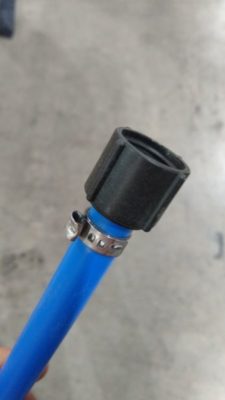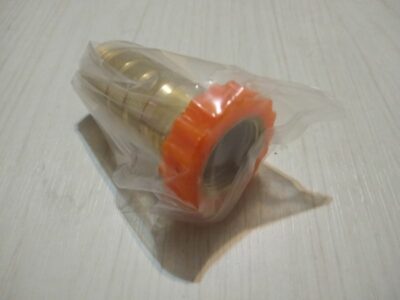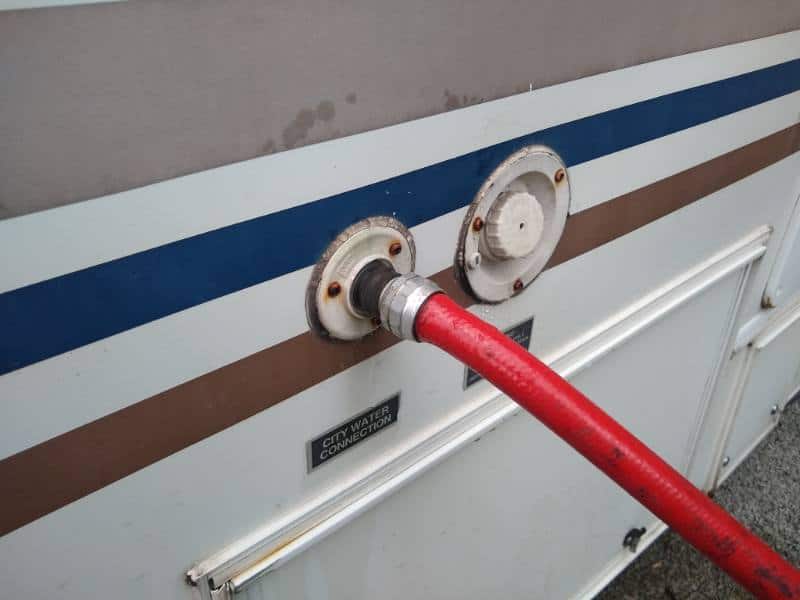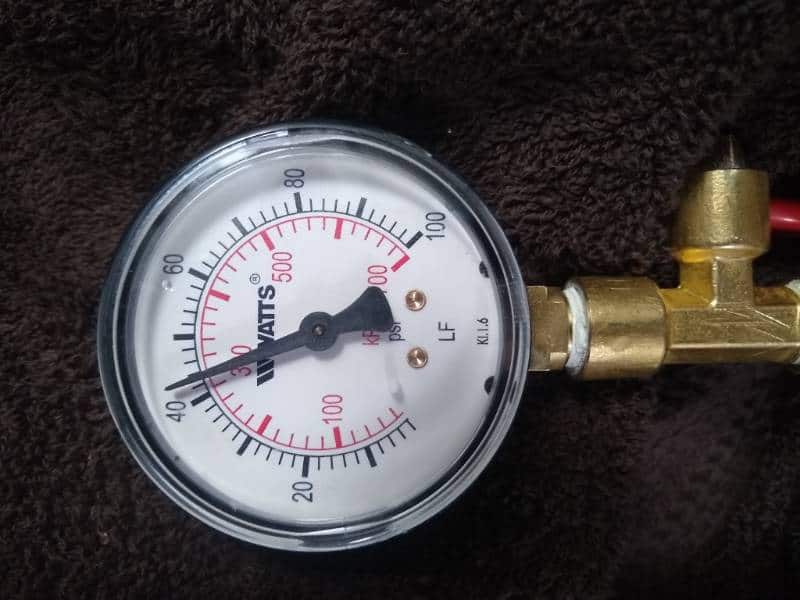A water pressure regulator is one of the top three items I command recommend to all RV owners (the other two are a surge protector and a valid driver’s license). This simple $20 device is a vanguard for your water system, protecting your delicate plastic fittings from the evils of high water pressure.
Plastic and Pressure Don’t Make Good Friends

“Plastic fittings,” I say? Yes, I do! Whereas your sticks n’ bricks house was likely plumbed with sweated copper pipe, your RV is likely plumbed with PEX or PB plastic pipe and polymer plastic fittings. Plus, the fittings on your faucets, shower diverters, toilet water valve, city water inlet, and other features are usually also – you guessed it – plastic!
These plastic fittings grow brittle with age, much like ourselves. They can easily crack or bust from pump water hammer, pressure spikes, and high city water pressure.
What Exactly Is High Water Pressure for an RV?
What constitutes high water pressure? Well, for reference, your 12V on-demand water pump generally puts out 40-55 psi. That’s the normal operating pressure of an RV water system. Anything above 60-65 psi is considered “high,” although RVs should be factory-tested to at least 80 psi for 10 minutes with no leaks. However, I’ve seen plastic fittings, such as toilet vacuum breakers, explode under 80-90 psi, so take that factory rating with a grain of salt.
How an RV Water Pressure Regulator Works

An RV water pressure regulator is just what it sounds like: a simple spring-loaded device that lowers water pressure to an acceptable level. Some are fixed; some are adjustable. Some come with a gauge that shows you incoming water pressure. Feel free to splurge for the bells and whistles you care about. In the end, they all work about the same.
Depending on the design of the RV water pressure regulator, they lower pressure down to 45-65 maximum psi. That’s a good range. Any lower, and you may not get enough water pressure to adequately aerate your faucet streams, or you may not get enough water flow to turn on your tankless water heater (or to enjoy your shower).
Can’t I Just Measure the Water Pressure Myself?
Some well-meaning RV owners shun regulators in favor of their own manual pressure gauges. They check city water pressure manually and only use a regulator when the measured pressure is too high.
This is a dangerous practice, and I don’t recommend it. What says the water pressure stays consistent? It doesn’t! Acceptable water pressure of 65 psi, when measured in the evening on a Saturday when half the campground is taking a shower, may jump to 85 psi at night once everyone turns in for the night! Only an inline water pressure regulator can protect you from fluctuations and spikes in delivery pressure.
It’s the Gift That Pays For Itself!

Hopefully, I don’t need to convince you further. It’s a $20 part, for Pete’s sake! But if you’re a skinflint and can’t bear to part with your precious Andrew Jackson without justifying the expense, then know this: It pays for itself. I’ve been on many a service call where a toilet water valve sprayed, a faucet fitting dripped, or a crimp ring connection leaked because the water pressure was just too high. I’ve seen over 90 psi from the spigot!
Can the Campground Change Their Water Pressure?
And don’t blame the campgrounds. Unfortunately, most campgrounds need a nominal pressure of at least 80 psi to ensure that everyone, including those seasonal sites in the neglected northern corner, is getting 60+ psi all the time. It’s no use asking the campground to reduce their pressure, and most cannot anyway if they are connected to the municipal water system. It’s up to you to regulate the water pressure you allow inside your camper!
How Do I Test a Water Pressure Regulator?

If you’re already a member of the responsible water pressure regulator club but you’re worried Ol’ Faithful is no longer doing its job, then you can buy a $10 pressure dial gauge and an adapter fitting to hook up to the end of your freshwater hose. Most simple pressure gauges work equally well with gas or liquid. Turn on the water pressure; see what the gauge reads (and watch if the pressure creeps up over 5-10 minutes, indicating a faulty regulator).
Leave a Reply